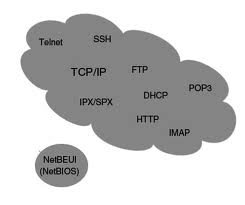Embedded and Network Protocols
Abstract:
-
the type of error checking to be used
-
data compression method, if any
-
how the sending device will indicate that it has finished sending a message
-
how the receiving device will indicate that it has received a message
Training Objective:
We offer a comprehensive listing of data communications protocols, their functions in respect to the OSI model, the structure of the protocol and various errors and parameters.
This training is designed to ensure that students of Engineering College with academic capabilities will have the skill set needed to deal with the challenges involved in real-world Protocol Design and Implementation to meet the needs of industries both today and in the future.
The course considers programming, device design techniques and wired or wireless networl topologies which can help to ensure that embedded systems using these protocols are reliable.
The course is taught mainly using the C programming language, hardware design, drivers develpoed on Linux, and a PC emulated as an embedded device.
Pre-requisites:
- All you need is an understanding of the C programming language, understanding of devices behaviour, and network related basics.
- General understanding about Microprocessors, Operating System Concepts and C Programming Language is assumed.
-
A prior knowledge or exposure to Linux operating system would be an added advantage.
Agenda:
-
The Duration of Training is:
-
16 Classroom Sessions and 16 Lab Sessions.
-
The Training complets in 4 Weeks.
-
-
The course is split into Three modules: (Any Three protocols from the list)
Training Content: (any Four of the below Protocols)
| Family | Protocol |
| ATM | ATM Cell (AAL0-AAL5), ATM Cell NNI, ATM Cell UNI, ATM SAR, IP Over ATM, AAL2 |
| ATM Signalling and Routing |
ITU Q2931, ITU Q2971, B-ICI, B-ISUP, IISP, PNNI Routing, PNNI Signaling, Q.2140, Q.SAAL, SPANS, UNI 3.x, UNI 4.0, ViVID MPOA, SPANS |
| CDMA 2000 | A1, A3, A7, A8, A9, A10, A11, A12, A13, A14, A15 |
| LAN Data Link Layer | CIF, DIS, Ethernet, FDDI, GARP, GMRP, GVRP, LLC, SMT, SNAP, SRP, Token Ring, VLAN (802.1Q) |
| LAN Emulation | LE 802.3, LE 802.5, LE Control |
| PPP | ATCP, BACP, BAP, BCP, BSD, BVCP, CCP, CHAP, DESE, DNCP, EAP, ECP, IPCP, IPv6CP, IPXCP, LCP, LEX, LEXCP, LQR, LZS, MPPC, Multi PPP, NBFCP, OSINLCP, PAP, PPP, PPP Multilink, PPP-BPDU, PPP over ATM, PPP over LAPB, PPP over LAPF, PPP over HDLC, PPPoE, SDCP, SNACP |
| SS7 | BICC, DUP, INAP, ISUP, MTP-2, MTP-3, Q.2140, SCCP, TCAP, TUP |
| TCP/IP | AH, ARP/RARP, ATMP, BGMP, BGP-4, COPS, DCAP, DHCP, DHCPv6, DNS, DVMRP, EGP, EIGRP, ESP, FANP, Finger, FTP, GOPHER, GRE, HSRP, HTTP, ICMP, ICMPv6, ICP, ICPv2, IDRP, IGMP, IGRP, IMAP4, IMPP, IP, IPv6, IPDC, IRC, L2F, L2TP, LDAP, LDP, MARS, MDTP, Megaco (ASCII + ASN.1), Mobile IP, MZAP, NARP, NetBIOS/IP, NHRP, NTP, OSPF, PIM, POP3, PPTP, Radius, RIP2, RIPng for IPv6, RSVP, RTSP, RUDP, SCSP, SCTP, SDCP , SLP, SMPP, SMTP, SNMP, SOCKS, TACACS+, TCP, TELNET, TFTP, TRIP, UDP, Van Jacobson, VRRP, WCCP, XOT, X-Window |
| UMTS | AMR, BCC, BSSAP+, CAMEL, CC, FP, GCC, GMM/SM, GTP, GTP', GCP, MAC, MAP, MM, NBAP, PDCP, Q2630, RANAP, RLC, RLP, RNSAP, RRC, SMS, SMS(TP), SNDCP,IuUP, SMSCB, BMC, MTP3B, RR, SS |
| UNIX | Rexec, Rlogin, Rprint, Rshell, Rwho |
| VoIP | AVAYA (Skinny), G729, G723.1, G711, Megaco (H.248), Megaco over ATM, MGCP, PROXY (Skinny), RVP over IP, SAP v2, SDP, SIP, Skinny, SGCP |
| WAP | WCMP, WDP, WSP, WTLS, WTP |
| XNS | IDP, PEP, RIP< SPP |
| X.25 | HDLC, IP Over HDLC, IPARSE over X.25 over LAPB, LAPB, MLP, SAM Over X.25 Over LAPB, X.25, X.75 |
